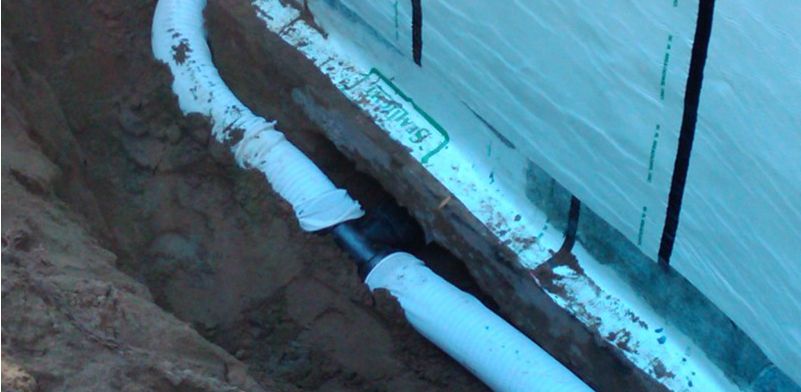What are Weeping Tiles’ Purpose and Functionality

Excess, unwanted water is very often the cause of foundation problems that impact your home’s structural integrity and can be costly to fix. But nailing down the source of that unwanted water can be tricky. Water problems may develop over time and only become evident when cracks in the foundation appear. To remedy, or better yet prevent, water problems from destabilizing your foundation, a proper weeping tile system is essential.
Weeping tiles aren’t exactly tiles
The word “tiles” can be a bit misleading since weeping tiles are in fact pipes. Specifically, they’re porous, four-inch pipes that channel underground water away from a building’s foundation. The name weeping tile comes from the era when terracotta tiles were typically utilized as drainage pipes. Modern weeping tiles are usually made of plastic and come with small slits, known as weep holes, in them.
How a weeping tile system works
The weeping tiles are placed with their holes facing up into a trench that runs along the perimeter of a building or beneath the floor of a home’s basement. The tiles are then surrounded by a substance that is larger than the weep holes – rocks or gravel are often the substances of choice. Using this setup, water that accumulates in the soil above the weeping tile will flow down the surrounding substance, through the weep holes, and into the weeping tile. The weeping tile then funnels the water into a solid pipe that either discharges the water away from the foundation or into a sump, which then discharges the water with a sump pump.
The difference between interior and exterior weeping tile
Exterior systems, sometimes referred to as French drains, are the preferred weeping tile system. This system handles water at ground level before it has a chance to infiltrate your basement. An exterior weeping tile system is made up of gravel, piping, and a trench that’s graded away from the building. Water that accumulates above the weeping tile will, through gravity, soak into the ground, through the gravel, and into the weeping tile. So long as the trench is properly sloped away from the home, the water will be channelled away from the foundation.
By contrast, interior weeping tile systems are typically thrust into action as a way of compensating for a failed exterior system. The interior system differs in that it doesn’t prevent water from entering the basement. Instead, it manages water that enters the basement by directing it to a sump pump. In this setup, a trench is created around the perimeter of the basement. Weeping tile is then laid at the bottom of the trench and connected to a sump pump, which will discharge the water into an exterior storm sewer.
Creating new weeping tile systems, or fixing malfunctioning ones, are complex and labour-intensive jobs that can involve cutting through concrete, excavating, and pouring gravel. As such, foundation repair specialists are best to handle the work. Contact us today, and our team of experts will be ready to help you with your foundation needs.
While these are big projects, they have a big payoff in protecting the foundation of your home from water damage.